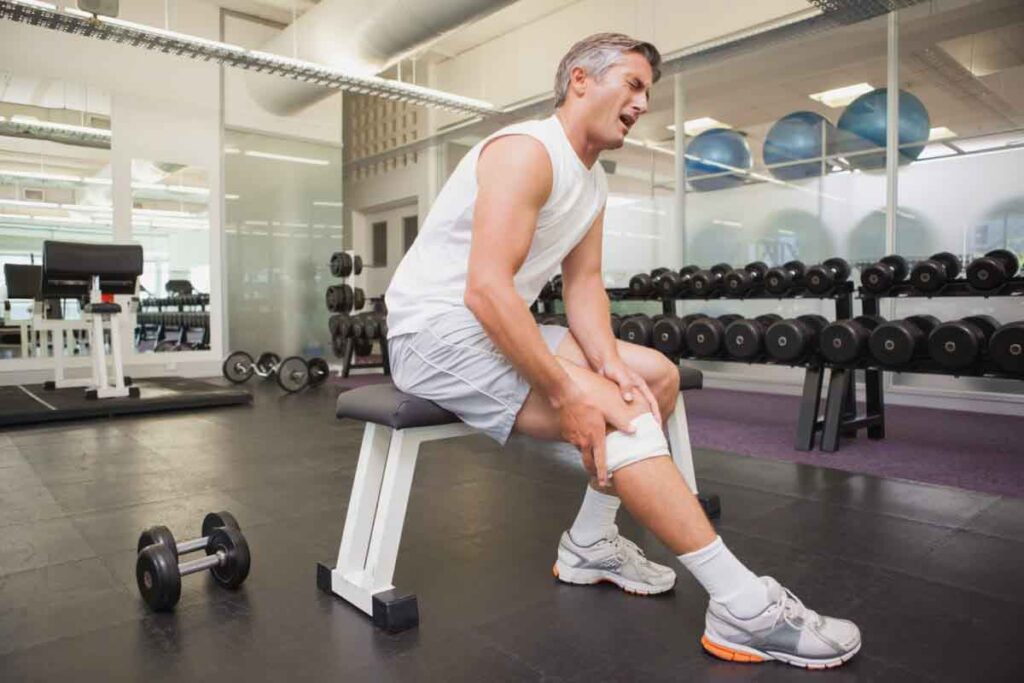New year resolution is very common for most people. Working hard, exercising, losing weight and doing physical activities to maintain good health are some examples of new year’s resolutions. Everyone is positive and motivated about their resolution but only a few people work on it consistently to achieve their goals. Some people over-exercise to achieve their goals which can result in injuries.
Excessive exercise causes most people to develop tendonitis, an inflammation of the tissue that connects muscles to bones. But ignoring this pain can lead to stress fractures, where bones start to break down. Fortunately, most stress fractures heal on their own if you stop doing some activities and let the injured part rest. Doctors typically recommend six to eight weeks of rest. More serious injuries need boots or crutches to recover.
Overtraining syndrome is another problem that comes with over-exercising. It affects health in both ways mentally and physically. You experience fatigue, decreased motivation and performance, and constant muscle soreness.
If you suffer from complications of fitness injuries, visit Texas Specialty Clinic for quality treatment and fast recovery. For an appointment, call us at (469) 545-9983.

What are the problems of over-exercising?
A new year is more motivational than usual because it feels like you have to turn the clock back and start over. For those who don’t exercise regularly or have low activity levels, sudden transitions and over-exercising can lead to injury, burnout and other health problems.
- Soreness :- Muscle soreness is to be expected after a workout or run. The degree of pain varies from person to person, but the pain reaches its peak within 24 to 48 hours. If an individual is in pain for longer than usual and it lasts for a week or two, it’s a sign that something is wrong. You should also pay attention to this immediately.
- Leg pain, especially at night.
- Have trouble sleeping or have symptoms of overtraining syndrome.
- Resting heart rate increases.
- Loss of motivation.
You may have a limp or something hurts that has changed the way you walk or run. Those are red flags. You should contact your doctor.
- Chronic injury :- Overuse of joints and muscles can result in long-term pain. If the pain continues for more than two weeks, the condition might be serious and needs immediate medical attention. Diagnostic tests are not available for such conditions, they can be treated by knowing the symptoms and the history. Cognitive-behavioural therapy, antidepressant drugs, and support groups are treatment options for chronic pain due to over-exercising.
- Fatigue :- Fatigue occurs in the system when you don’t have time to recover properly from a long time workout. Moreover, if you’re working out too much and constantly burning calories, it can result in low energy availability which is due to the body consuming its own energy which is stored.
- Impaired metabolism :- Low energy available for a long period of time can adversely affect different organs and result in iron deficiency anaemia, low testosterone levels in men, and decrease bone density.
- Poor immunity :- Overtraining can wear down your immunity system and make it harder to fight off infections such as upper respiratory tract infections.
- Increased cardiovascular stress :- Overtraining makes even simple training more intense. In particular, those who suddenly work out more may find it difficult to return to normal heart rate after exercise due to the increased baseline heart rate and the need for prolonged rest.
- Decreased performance :- One of the most important signs of overtraining is decreased exercise capacity, regardless of increasing training intensity or volume. This decreased performance may be associated with decreased agility, slower reaction time, decreased running speed and decreased strength/stamina. In addition, excessive training leads to a decrease in motivation.

How to avoid fitness injuries
- Take it easy :- When starting an exercise routine or new exercise program, start slowly. Then slowly increase the intensity, duration and frequency. Do not start with an intense workout. As your fitness skills improve, you’ll be able to do more activities.
- Do stretching :- Do dynamic stretching before and after your workout. This gives you more flexibility. Research is conflicting on whether it also helps prevent injury. The best time for stretching is after warming up and cooling down.
- Warm-up and cool-down :- Every workout session should start with a warm-up and end with a cool-down. Warming up will help your body prepare for exercise. Gradually raise your heart rate and relax your muscles and joints. A post-workout cooldown is important to slowly return your heart rate to normal. One way to cool down is to walk for 5-10 minutes after exercising.
- Dress properly :- Wear suitable gear for your workout. If you are running, wear good running shoes that fit properly.
- Take rest :- Take 1-2 days off per week. Resting gives your body a chance to recover between workouts. This will prevent injury.
- Stay Hydrated :- Drinking enough water will fuel your body and give you the energy to work out. Fluids need to be replaced with water which is released from the body in form of sweat. You will also lower the risks of heat stress and maintain performance level and body function.

This new year workout safely and follow the methods mentioned above to avoid injuries during workouts. If you suffer injuries, visit Texas Specialty Clinic to recover faster, dial (469) 545-9983 to book an appointment.

